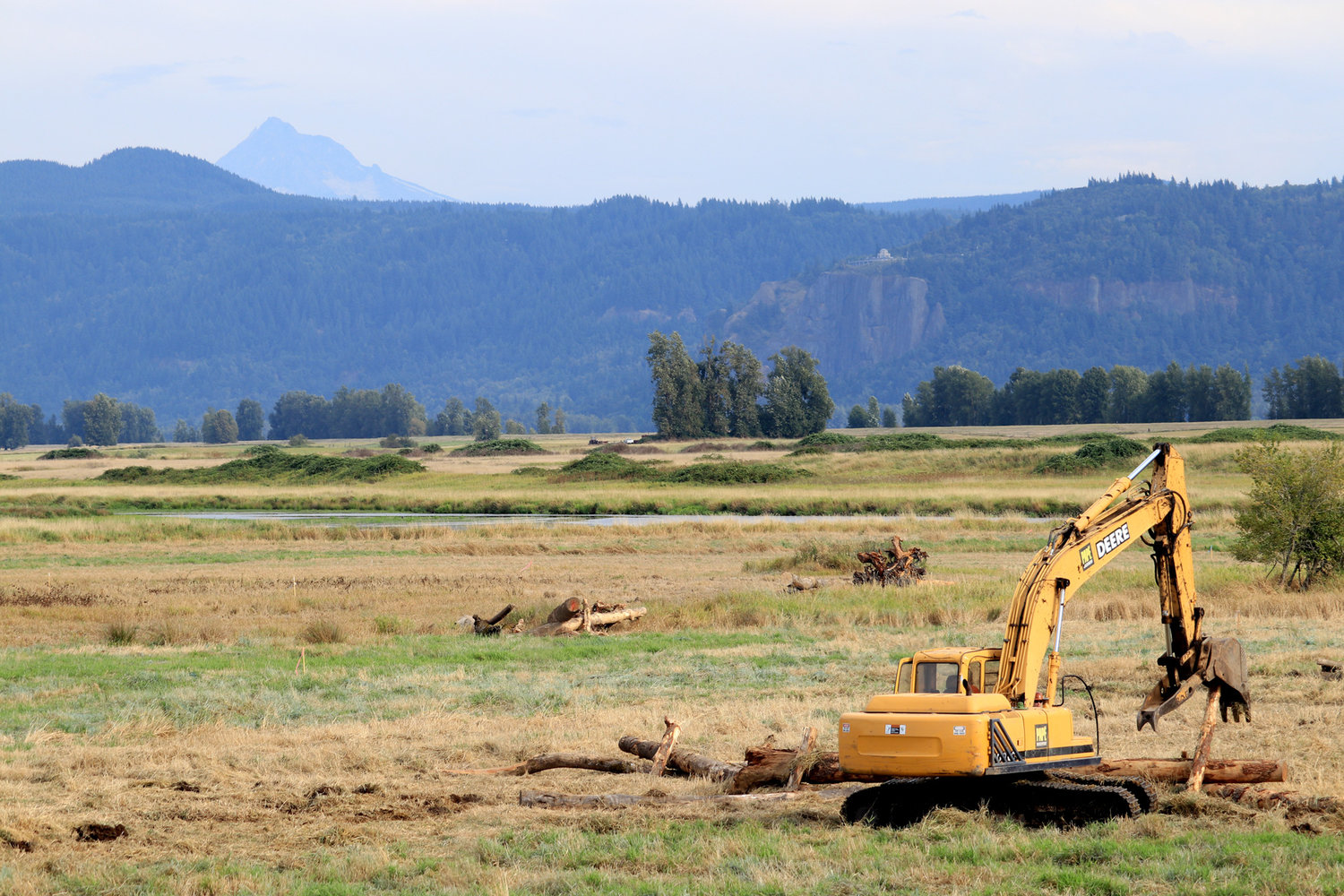The following post was authored by Chris Lapp, Project Leader for the Ridgefield National Wildlife Refuge Complex, which includes Steigerwald Lake National Wildlife Refuge.
After five years of planning, design and coordination, we are finally at the point of literally moving dirt – albeit a shovel’s worth. On Thursday afternoon, September 5th, 2019, the project officially began with a ceremonial groundbreaking. The Lower Columbia Estuary Partnership, in cooperation with the U.S. Fish and Wildlife Service, hosted a gathering of project partners and supporters to commemorate the Steigerwald Floodplain Restoration Project’s implementation.
Restoration on a Whole New Scale
This 22 million dollar project consists of multiple phases, including habitat restoration and public use features, that will span the next three years. The project begins this Fall and will conclude in 2021.
The first phase of the project, which the groundbreaking event highlighted, is the preliminary restoration of the northern portion of Gibbons Creek. The work here will re-establish the natural process of the Creek migrating across much of its historic “alluvial fan,” the place where faster flowing water slows and spreads nutrient-rich sediment in the floodplain. Further enhancing the historic conditions of this floodplain, we will reconfigure the area with riparian plantings, placement of large wood, and restored floodplain connectivity.
This Only Happens Together
Multiple partners and supporters gathered at trailhead for the Gibbon Creek Art Trail to celebrate this incredible milestone. Agency and elected officials shared words of praise for the collaborative efforts that have brought this dream to reality.
Their words caused me to reflect upon the power of partnership. I was struck by what folks can do together when we move beyond our respective boundaries and champion a project of this scale. Beyond the project itself, I believe we have also set in motion a broad pattern of public understanding and stakeholder support, blurring the lines of public lands and the communities that surround them. Ultimately, what we are achieving is large-scale ecosystem restoration that will benefit diverse assemblages of fish and wildlife, improve public recreation opportunities, and stimulate the local economy.
The Transformation Begins
Following the stirring words of these partners and supporters, I joined them at the water control structure atop the dike road that for years has literally and metaphorically represented a disconnect from the natural processes of this land. I found this a fitting location to dig in and break ground where these artificial features will be removed.
As my shovel pierced the dirt, I felt a transformation of the land beginning – not for human occupation, like we so often see in an urban setting, but for the health of a diverse array of native wildlife and plants. As they thrive, so will we. It may feel like a long path ahead to the full realization of this transformation, but be assured that under the management of your National Wildlife Refuge System the resulting benefits will be preserved for generations to come.
Project Details
Purpose: To expand wetland acreage off the main stem of the Columbia River, which will provide juvenile salmon access and protection prior to entering the Pacific Ocean and increase their survival.
Size: Over 900 acres of expanded wetland acreage
Challenge: Reconfigure the Refuge’s current floodplain infrastructure by lowering over two miles of U.S. Army Corps of Engineers regulated levees to natural levee height, breaching portions of that, and building two new North-South oriented levees.
Payoffs: Provide salmon rearing habitat in a portion of the Columbia River that has documented use by six species of salmon and trout and two species of lamprey. Improve critical bird habitat and public recreation infrastructure at a high priority urban national wildlife refuge and provide an unparalleled opportunity to engage multiple partners in a large-scale ecosystem restoration.
